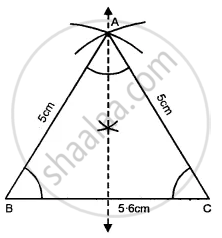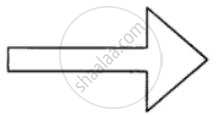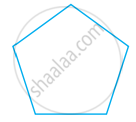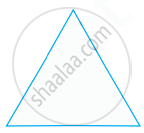Advertisements
Advertisements
प्रश्न
Construct a triangle ABC in which AB = AC = 5 cm and BC = 5.6 cm. If possible, draw its lines of symmetry.
उत्तर
Steps of Construction:
(i) Draw a line segment BC = 5.6 cm

(ii) With centres B and C and radius 5 cm, draw two arcs intersecting each other at A.
(iii) Join AB and AC.
∆ ABC is an isosceles triangle.
(iv) Draw the bisector of ∠A. This is the only one line of symmetry as the triangle is an isosceles.
APPEARS IN
संबंधित प्रश्न
Take a graph paper and mark the points A(2,0), B(2,8) and C(S,4) on it. Taking AB as the line of symmetry, obtain and write the co-ordinates of point D. Complete the quadrilateral ABCD and give its geometrical name.
By drawing a freehand sketch of the following, draw the line (s) of symmetry, if any:
an isosceles right-angled triangle
In the figure given below, draw the line (s) of symmetry, if possible:

In the figure given below, draw the line (s) of symmetry, if possible:

Draw a quadrilateral with exactly two lines of symmetry. In case, if possible, represent the line/ lines of symmetry by dotted lines. Also, write the special name of the quadrilateral drawn.
A quadrilateral ABCD is symmetric about its diagonal AC. Name three sides of this quadrilateral which are equal.
One day his clever daughter gave him an idea which he liked very much. Now he never got confused.
- Can you guess what the idea was?

Identify the shape given below. Check whether they are symmetric or not. Draw the line of symmetry as well.

Draw all lines of symmetry for the following figure as given below:

Trace figure. Then draw all lines of symmetry, if it has.

